(Black lacquered iron 62 ken Sofukurin Kabuto from the Soshu school)
Japanese helmet comprised of 62 iron plates, covered in black lacquer dating from the Momoyama/Early Edo period. Each of the overlapping plates has an upturned edge (suji) covered by a copper rib (fukurin), with the base of each plate having a copper decoration/reinforcement called a higaki. The crown of the helmet where the plates converge are further decorated with a five-stage copper tehen no kanamono. Shiten no byo and hibiki no ana are also present on this kabuto.
The neck guard (shikoro) is made of 5 plates with wide-spaced (sugake) lacing and turnbacks (fukigaeshi) with open work (sukashi) and of an archaic design.
The interior of the kabuto is covered in red urushi and retains its helmet lining (ukebari).
Often kabuto - being the most valuable component of a samurai's armour - were passed from generation to generation and would be refurbished for use. This kabuto shows signs of such restoration, having likely been relacquered in the Edo period because the earlier layer of urushi underneath is visible in a few areas.
Kabuto in this style with the copper fukurin and higaki, which are reminiscent of the akoda nari from the Muromachi period, were created by armourers of the Soshu branch of the Myochin school.
the maedate is edo
shikoro and mabizachi late edo circa 1800


























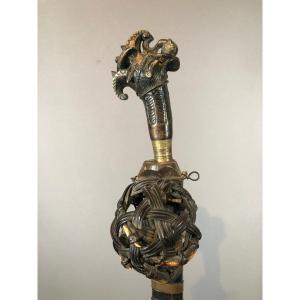
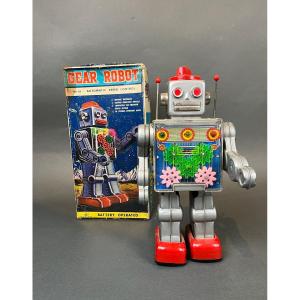


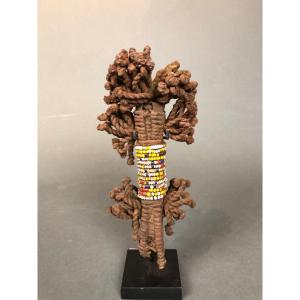
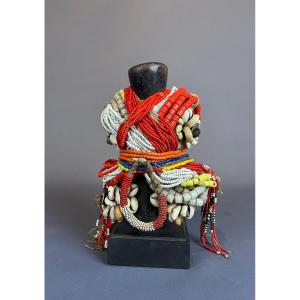



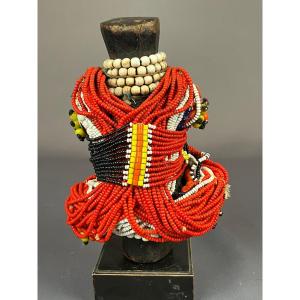



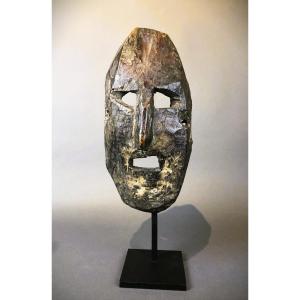

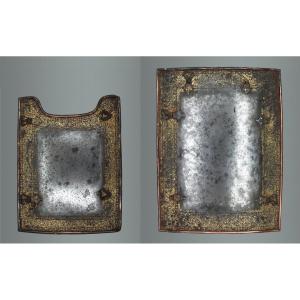
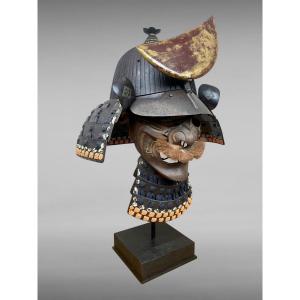
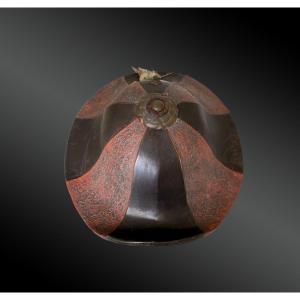




 Le Magazine de PROANTIC
Le Magazine de PROANTIC TRÉSORS Magazine
TRÉSORS Magazine Rivista Artiquariato
Rivista Artiquariato